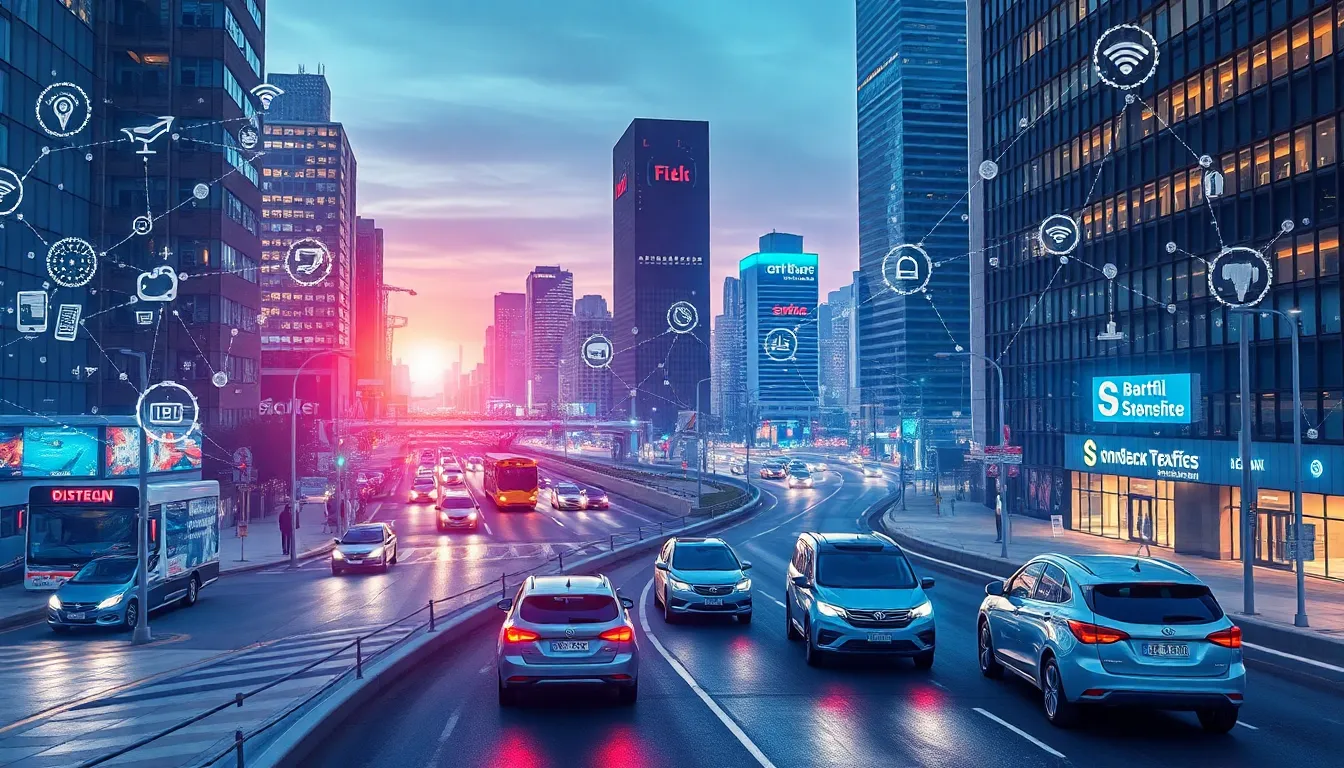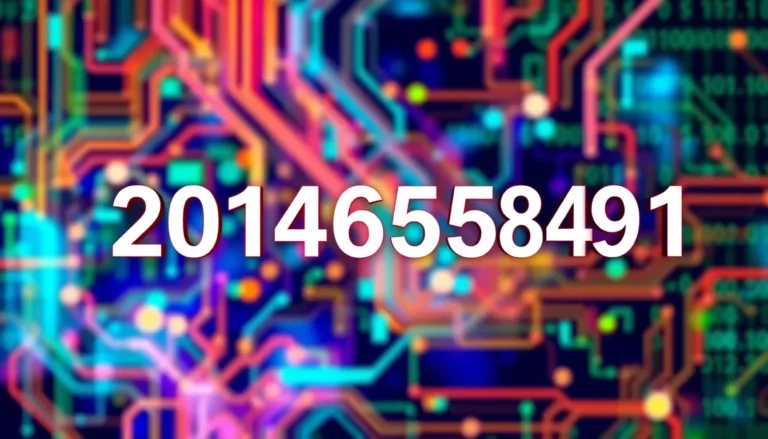Imagine a world where your fridge texts you when you’re out of milk and your car knows the best route to avoid traffic jams. Welcome to the exciting intersection of IoT and 5G! This dynamic duo is not just a techie’s dream; it’s transforming everyday life in ways that are both mind-blowing and, let’s face it, a little hilarious.
Table of Contents
ToggleOverview of IoT and 5G
The Internet of Things (IoT) refers to the interconnected network of devices that communicate and exchange data over the internet. Smart appliances, wearables, and vehicles all fall under this category. Integration of 5G technology significantly enhances IoT capabilities. The increased bandwidth and lower latency provided by 5G enable real-time data transmission, which improves responsiveness in various applications.
Smart cities are one example where IoT and 5G convergence excels. Sensors monitor traffic flow and environmental conditions, optimizing city management. Automated systems in public transportation improve efficiency, ensuring timely services. Healthcare also benefits through remote monitoring and telemedicine. High-speed data transfer allows for immediate analysis of medical data, enhancing patient care.
Industries increasingly adopt IoT devices powered by 5G to streamline operations. Manufacturing processes gain from real-time monitoring of machinery and inventory levels. This shift enhances productivity and reduces downtime. Agriculture and farming leverage IoT sensors to collect data on soil conditions, allowing for informed decisions on irrigation and crop management.
Security remains a concern. With more devices connected, vulnerabilities arise that require addressing. Implementing robust cybersecurity measures is crucial to protect sensitive data from potential breaches.
The combination of IoT and 5G technology presents immense opportunities across various sectors. Enhanced connectivity transforms everyday experiences, driving innovation and efficiency. As deployment expands, the future holds the potential for even more advanced applications, reshaping how individuals and organizations interact with technology.
How 5G Enhances IoT Connectivity

5G technology significantly boosts IoT connectivity by increasing speed and expansion potential. Enhanced communication networks now support smoother device interactions and real-time data processing.
Speed and Bandwidth Improvements
Increased speed fundamentally transforms IoT experiences. Higher bandwidth supports larger volumes of data transmission, accommodating numerous connected devices simultaneously. Devices like smart cameras and sensors can transmit HD video in real-time without delays. Enhanced network capabilities allow municipalities to implement smart traffic systems that utilize real-time data for improved traffic management. Furthermore, industries benefit from faster data processing, improving decision-making and operational efficiencies.
Low Latency Benefits
Reduced latency plays a pivotal role in IoT functionality. With 5G, response times drop to as low as one millisecond, allowing devices to communicate almost instantly. Such rapid responsiveness is essential for applications like autonomous vehicles that rely on immediate data to navigate safely. In healthcare, remote patient monitoring systems can alert medical professionals in real-time, improving patient outcomes. Curbing latency enhances user experiences across various industries by ensuring seamless connectivity, fostering innovation and efficiency in daily life.
Key Applications of IoT with 5G
IoT and 5G technology create impactful applications across various sectors. These advancements enhance connectivity and streamline operations in significant ways.
Smart Cities
Smart cities leverage IoT devices powered by 5G to improve urban management. Traffic sensors collect data to minimize congestion, while environmental monitors continuously assess air quality. Real-time data enables municipalities to respond promptly to issues, enhancing public safety and resource allocation. Improved communication between connected vehicles and traffic signals optimizes traffic patterns, reducing travel time. Smart streetlights adjust brightness based on ambient light conditions, contributing to energy savings. Such innovations lead to efficient city living, fostering a sustainable environment.
Industrial Automation
Industrial automation thrives through IoT advancements with 5G. Factories utilize connected sensors to monitor machinery performance, identifying maintenance needs before breakdowns occur. This predictive maintenance approach reduces downtime, enhancing overall productivity. Additionally, IoT allows for seamless inventory tracking, leading to smarter supply chain management. Real-time analytics provide insights into production processes, facilitating quicker adjustments and decision-making. Robotics integrated with IoT technology streamline manufacturing workflows, creating a more agile operational environment. The result is optimized efficiency and reduced operational costs.
Healthcare Innovations
Healthcare experiences a transformation with IoT and 5G integration. Remote monitoring systems enable continuous tracking of patient vitals, promoting proactive care management. Healthcare providers receive immediate alerts if any abnormalities arise, ensuring timely interventions. Telemedicine applications utilize real-time data transmission for virtual consultations, expanding access to care, especially in remote areas. Wearable devices collect health metrics that doctors can analyze, enhancing personalized treatment plans. Such advancements lead to improved patient outcomes and higher satisfaction rates. These innovations demonstrate the potential of technology to revolutionize health services.
Challenges in Implementing IoT and 5G
The integration of IoT and 5G technology faces several challenges that can hinder progress.
Security Concerns
Cybersecurity poses a significant challenge in the IoT and 5G landscape. Numerous devices connecting to networks increase vulnerability to cyber attacks. Data breaches can expose sensitive information, making robust security measures essential. Encryption strategies and secure authentication protocols help mitigate risks. Additionally, manufacturers must prioritize security features to protect devices from potential threats.
Infrastructure Limitations
Infrastructure poses another challenge in implementing IoT and 5G. Existing networks often struggle to support the high demands of connected devices. Rural areas may lack adequate 5G coverage, limiting the expansion of smart technologies. Upgrading infrastructure requires substantial investments from governments and private entities. Collaborations can facilitate the necessary enhancements to network capabilities, paving the way for broader IoT adoption.
Future Trends in IoT and 5G
Continued advancements in IoT and 5G will shape future technologies and markets. Many exciting innovations are on the horizon, driven by these powerful technologies.
Emerging Technologies
Artificial intelligence integrates seamlessly with IoT, enhancing data analysis and decision-making. Machine learning algorithms leverage real-time data from connected devices, improving automation. Edge computing also thrives, processing data closer to the source instead of relying solely on cloud storage. Smart home devices evolve further, leading to increased personalized user experiences. Wearable technologies will connect with healthcare systems, providing critical health metrics to professionals instantly. Additionally, autonomous vehicles will rely heavily on 5G to transmit real-time data, enhancing safety and efficiency on the roads.
Potential Market Growth
Remarkable growth is expected in the IoT and 5G markets. Experts project that the global IoT market will reach approximately $1.5 trillion by 2025, driven by increased demand for connected devices. At the same time, 5G technology deployment will contribute significantly, with forecasts estimating its market size to exceed $250 billion by 2026. Industries such as healthcare, manufacturing, and smart cities will lead this growth through enhanced efficiency, increased productivity, and lowered operational costs. As organizations recognize the benefits of integrating these technologies, investments will soar, creating a robust ecosystem for innovation.
The fusion of IoT and 5G is set to redefine how individuals interact with their environments. As devices become smarter and more connected the potential for enhanced efficiency and convenience grows exponentially. This transformation isn’t just about technology; it’s about improving quality of life in urban settings and beyond.
While challenges like cybersecurity and infrastructure limitations remain, the benefits of this convergence are undeniable. With ongoing advancements in AI and edge computing the future looks promising. As industries continue to adopt these technologies the possibilities for innovation are limitless. Embracing IoT and 5G will be crucial for those looking to stay ahead in an increasingly connected world.



